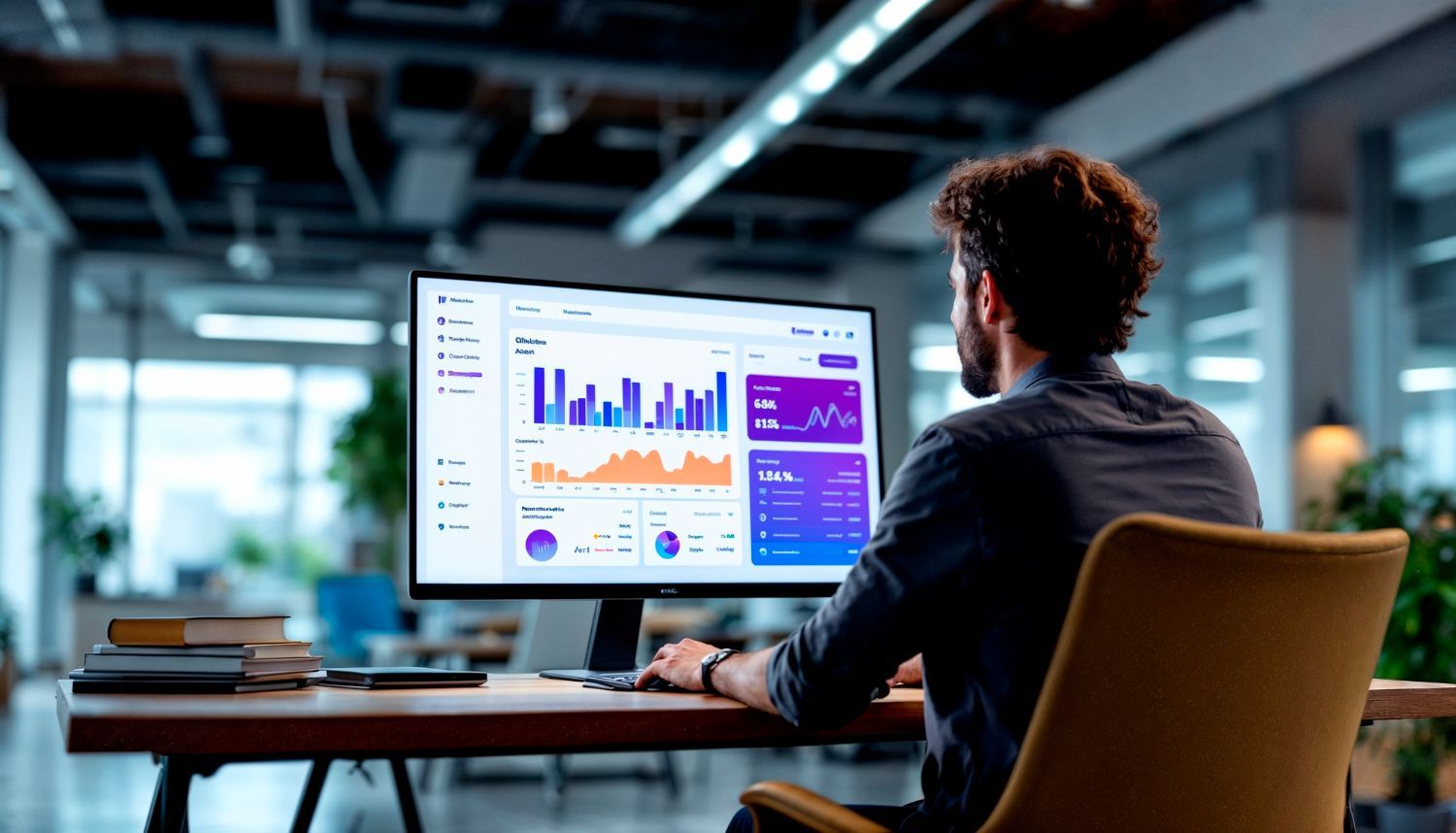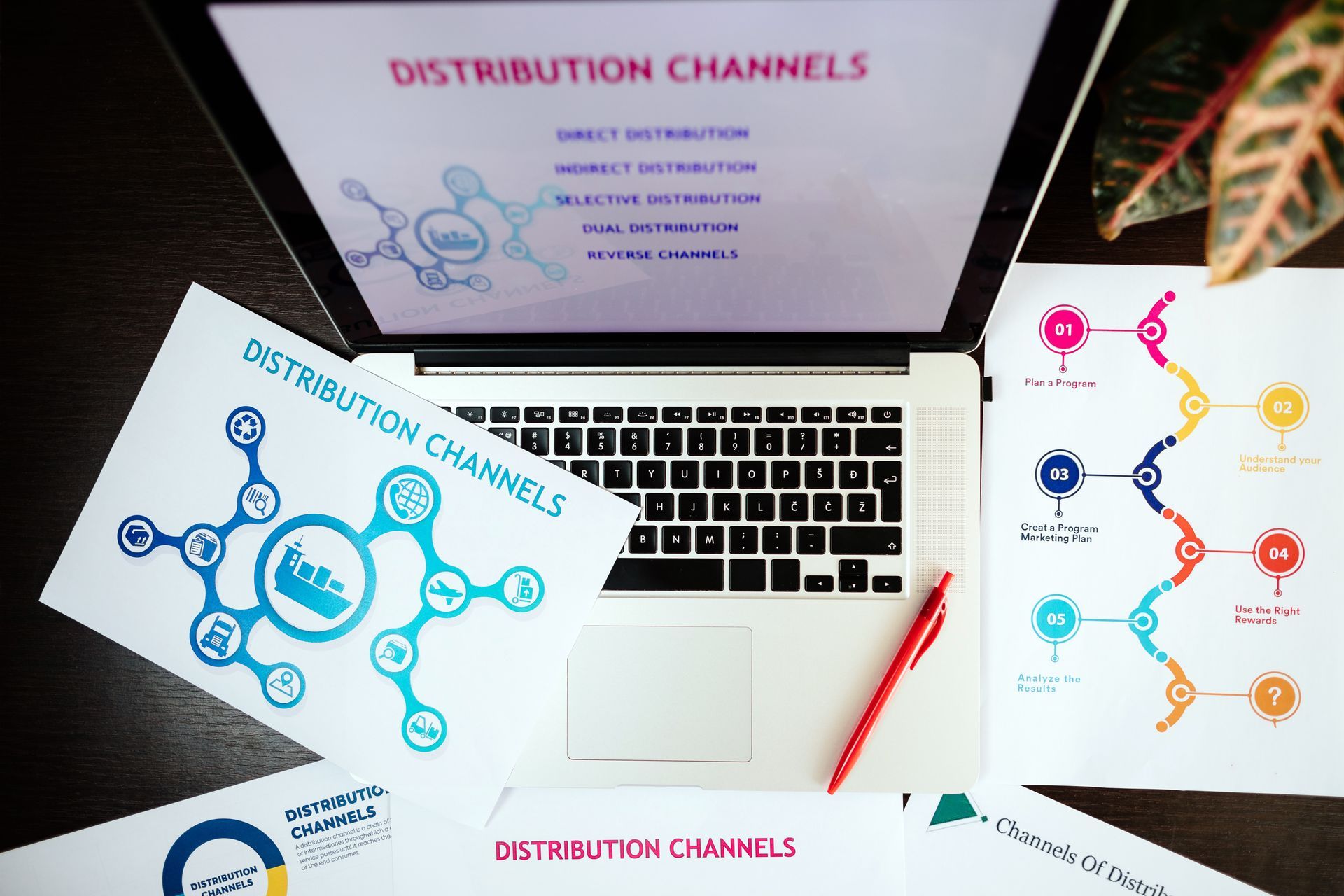Data-Driven Marketing Strategies That Scale Agency Campaigns Faster

Your agency campaigns aren't performing like they used to.
The world will produce 181 zettabytes of data by 2025. That's a staggering amount of information, but here's the problem: most agencies don't know how to use it effectively.
You already know the basics. 71% of consumers expect personalized interactions and 76% get frustrated without them. Companies that nail personalization drive 40% more revenue from it. The Big Data Analytics market keeps growing toward $105.08 billion by 2027.
But collecting data isn't the same as using it well.
Only 46% of organizations worldwide actually use big data analytics in market research. That means more than half are leaving money on the table. The agencies that figure this out make smarter decisions, run better campaigns, and create experiences that actually connect with customers.
The results speak for themselves. Total Tools saw a 200% jump in loyalty program sign-ups and boosted conversions by 12% through smart data use. When markets get tough, the agencies that sharpen their targeting win more customers.
The good news is that you can fix this.
This article will show you how to build data-driven marketing strategies that take your agency campaigns from average to exceptional. You'll learn how to potentially double your ROI across Meta, Google, Email, and SMS channels. No fluff, just what works.
Set Clear Goals and Know Your Audience
Data-driven marketing strategy starts with getting the basics right. You can't fix what you can't measure, and you can't measure what you haven't defined clearly.
Most agencies mess this up from day one.
Define measurable marketing objectives
"Increase brand engagement" isn't a goal. It's wishful thinking.
Successful agencies set SMART objectives—Specific, Measurable, Achievable, Relevant, and Time-bound. This isn't marketing jargon. It's the difference between campaigns that work and campaigns that waste money.
Here's what a real objective looks like: "Grow Facebook followers by 15% within three months while improving engagement by 20%". Notice the specifics. Notice the timeline. Notice you can actually tell if you hit it or not.
To set objectives that matter:
- Identify the specific business problem you're solving
- Choose metrics that actually measure success
- Make sure they align with your client's bigger picture
- Set realistic timeframes
- Ensure hitting the goal creates real value
LayerFive's identity resolution capabilities help you track these objectives across channels. You'll know if you're making progress or just spinning your wheels.
Build detailed customer personas
$37 billion in ad spend gets wasted every year on ads that don't connect with the right people. Most of this happens because agencies skip the hard work of understanding their audience.
Demographics aren't enough. Age, location, and income tell you who someone is, not what they care about. You need the psychographic stuff—values, pain points, what keeps them up at night. 80% of consumers prefer brands that get personal, so this work pays off.
Here's how to build personas that actually work:
- Study your website analytics for behavior patterns
- Look at social media engagement, not just follower counts
- Review purchase histories and customer service interactions
- Talk to real customers through surveys and interviews
- See what your competitors are targeting
The goal isn't just knowing who your customers are. It's understanding what motivates them to act.
Align goals with client business outcomes
Your marketing goals need to connect to what your client actually cares about—making money. 47% of marketers say audience research drives content marketing success, but research without business alignment is just expensive curiosity.
Before you launch anything, get clear on:
- Which KPIs actually matter to your client's business
- How those metrics connect to revenue
- What ROI they expect and when
- How often you'll review progress together
- What you'll do when the data tells you to change course
Clients who help set the objectives are more likely to see the value when you hit them. They're invested in the outcome because they helped define what success looks like.
This foundation work isn't glamorous, but it's what separates campaigns that deliver results from campaigns that just create activity.
Choose the Right Data Sources and Tools
The foundation matters more than you think.
Brands that use first-party data effectively see a 2.9X revenue lift and 1.5X increase in cost savings. That's not a small difference - it's the difference between campaigns that work and campaigns that waste money.
Use first-party and third-party data effectively
First-party data has become your most valuable asset. Google is phasing out third-party cookies and privacy regulations keep getting stricter. The data you collect directly from your audience - customers, site visitors, social media followers - is information you can actually rely on.
Here's what you should be collecting:
- Demographic information
- Website and app behavior patterns
- CRM data and purchase history
- Social media interactions
- Survey responses and customer feedback
This data gives you accuracy that third-party sources can't match. 82% of marketers plan to increase their use of first-party data, which tells you where the industry is headed.
Third-party data still has its place for broader market insights, but it should support your first-party data, not replace it.
Use LayerFive's identity resolution capabilities
Here's where most agencies get stuck. You have customer data scattered across different platforms and touchpoints. Identity resolution connects these fragments to build a complete picture of each customer.
LayerFive's identity resolution solves this by:
- Unifying fragmented customer data across platforms
- Detecting more visitors and increasing retargeting audience size
- Linking data from email marketing, customer service, and other platforms
- Improving visitor recognition to boost marketing ROI
Marketers in the US are expected to spend $2.60 billion on identity resolution programs by 2022 - a 188% increase over four years. This investment makes sense when you see the results.
Connect your CRM, analytics, and ad platforms
Your tools need to talk to each other.
Connecting your CRM with analytics tools and advertising platforms creates a system that gets smarter over time. You can feed real-time conversion data back into ad platforms, helping AI learn which ads and audiences actually drive results.
Google Analytics shows you web traffic patterns, high-performing pages, engagement rates, and traffic sources. Connect your CRM with Google Ads and you can refine targeting, streamline conversion tracking, and improve ROI.
The benefits add up quickly:
- Detailed audience insights by connecting lead data with your CRM
- Offline sales data pushed into ad platforms to track conversions beyond digital channels
- Real-time sync between customer behavior and campaign adjustments
- Better bid strategies using CRM insights to improve return on ad spend
This connected approach creates a feedback loop that makes your campaigns smarter with every interaction. Your marketing budget flows toward what actually works, maximizing impact across Meta, Google, Email, and SMS channels.
Turn Data into Actionable Insights
You've got the data. Now what?
Collecting information is just the beginning. The real value comes when you turn that raw data into decisions that actually improve your campaigns. High-performing organizations are three times more likely to report that their data analytics initiatives contribute at least 20% to earnings before interest and taxes.
The problem is most agencies collect data but don't know how to use it effectively.
Analyze customer behavior across channels
Your customers interact with your brand everywhere - your website, social media, email, ads. Understanding these interactions gives you the foundation for better marketing decisions.
Customer behavior analysis helps you:
- Spot patterns in how customers shop and engage
- See which campaigns actually work
- Find the friction points that kill conversions
Here's the reality: 63% of B2C consumers and 76% of B2B customers expect brands to understand their unique needs. You can't meet that expectation without proper behavior analysis.
The key is looking at both what customers do (quantitative data) and why they do it (qualitative data). Most agencies only look at one side of this equation.
LayerFive helps agencies pull customer data from multiple sources - Google Analytics, Shopify, CRMs, internal systems - into one unified view. This eliminates the data silos that fragment your understanding and slow down decision making.
Use predictive analytics to forecast trends
Stop reacting to what already happened. Start predicting what will happen next.
Predictive analytics applies statistical techniques and machine learning to your historical data to forecast future customer behavior with remarkable accuracy. This shifts your marketing from reactive to proactive.
Here's how you can use it:
- Forecast campaign performance: Historical data helps you predict future outcomes so you can allocate resources smarter
- Identify at-risk clients: Predictive modeling spots early warning signs of churn before it happens
- Optimize ad spend: Historical ad performance data guides strategic budget allocation
- Demand forecasting: Predict the best times to launch campaigns based on anticipated demand changes
LayerFive's platform makes these predictive capabilities accessible without requiring a data science team. You get actionable insights that improve ROI across Meta, Google, Email, and SMS channels.
Visualize data for better decision-making
Raw data overwhelms. Visual data informs.
Data visualization transforms complex information into insights you can actually use to make faster, better decisions. Companies that apply data visualization effectively see a 44% increase in engagement metrics. Yet only half of the 72% of marketers using visualization software know how to use it properly.
This gives you clear advantages:
- Spot trends quickly: Visual tools reveal patterns over time, helping you make informed projections and adjust strategies proactively
- Communicate with stakeholders: Visualizations make data accessible to non-technical team members and clients
- Catch problems early: Visual tools help you identify anomalies and variances before they become expensive mistakes
- Optimize resources: Visual data shows current status and future scenarios for better strategic planning
LayerFive's dashboard capabilities let you create customized visualizations showing key performance indicators in real-time. You can quickly assess ongoing campaigns, spot trends, identify underperforming areas, and capitalize on what's working.
The combination of behavior analysis, predictive insights, and clear visualization creates a system that continuously improves your campaign performance. New data flows in, insights get sharper, and your campaigns get better. That's how you scale performance faster than your competition.
Implement Scalable Data-Driven Tactics
You have the insights. Now what?
Turning data into action requires tactics that actually scale. Most agencies get stuck here because they try to do everything manually. That doesn't work when you're managing multiple clients and campaigns.
Personalize campaigns using real-time data
Real-time personalization isn't just a nice-to-have anymore. 72% of business buyers expect vendors to personalize their experiences, yet only 15% of CMOs believe they're on the right track with personalization. That's a massive gap.
The key is responding immediately to what customers do. Someone abandons their cart? Hit them with a targeted offer. They browse winter coats? Show them coat recommendations, not summer dresses.
Real-time data lets you:
- Build product recommendations based on what they actually look at
- Adjust messaging based on where they are or what the weather's like
- Modify offers based on what they've bought before
Automate workflows with marketing platforms
Stop doing things manually that a computer can do better.
Marketing automation turns repetitive tasks into smooth workflows that run themselves. 56% of marketing professionals saw better conversion rates after implementing automation. More importantly, it frees up your team to focus on strategy instead of busy work.
Set up triggers that make sense. Someone fills out a form? Automatic email sequence starts. They visit your pricing page three times? Sales gets notified. They haven't engaged in 30 days? Re-engagement campaign kicks in.
This creates consistent experiences without you having to think about it every time.
Test and optimize with A/B and multivariate testing
Stop guessing what works.
A/B testing compares two versions to see which performs better. It's perfect when you want to test big changes or when you don't have massive traffic. Multivariate testing is more complex—it tests multiple elements at once to see how they work together. You need more traffic for this, but you get deeper insights.
The point is simple: test everything that matters. Headlines, images, calls-to-action, email subject lines. Let the data tell you what works instead of going with your gut.
Use LayerFive's CDP to activate segments
Here's where it all comes together.
LayerFive's Customer Data Platform takes your customer segments and activates them across all your marketing channels. You've built the profiles, now you can target with precision that wasn't possible before.
The platform organizes both first and third-party data into a single customer view. This makes your advertising more targeted and relevant. Plus, it updates in real-time, so you're always working with the most current customer information.
The result? You can potentially double your ROI across Meta, Google, Email, and SMS marketing because you're hitting the right people with the right message at the right time.
Measure, Optimize, and Scale Campaigns
Measurement tells you what's working and what isn't. Without it, you're flying blind.
Track KPIs like ROAS, LTV, and conversion rates
Focus on metrics that actually matter to your bottom line. Return on Ad Spend (ROAS) shows you the revenue generated for every dollar spent on advertising. Customer Lifetime Value (LTV) calculates the total revenue you can expect from a customer throughout their relationship with your brand. Conversion rates—especially when you break them down by campaign and audience—reveal how well your marketing turns prospects into customers.
These aren't vanity metrics. They're business metrics.
LayerFive's platform lets agencies track these vital numbers through real-time dashboards, giving you immediate visibility into campaign performance across Meta, Google, Email, and SMS channels.
Use attribution models to evaluate performance
Attribution modeling assigns proper credit to each touchpoint in the customer journey, showing you which channels actually drive conversions. Multi-touch attribution models are often more accurate because they distribute value across all interactions rather than just the last one.
The model you choose matters. If you're a new agency with minimal channels, Google Analytics' last-click attribution works fine to start. But as your marketing gets more complex, you'll need multi-touch attribution to see the full picture.
Continuously refine strategies based on insights
Data-driven optimization creates a cycle of improvement. Set up real-time dashboards that display your KPIs so your team can make decisions based on current performance data. A/B testing remains one of the best ways to compare different campaign versions and see which performs better.
When campaigns underperform, the data tells you why. Is it the messaging? The timing? The audience targeting? Companies that regularly analyze performance and adjust their strategies see 30% higher profit margins than those that don't.
LayerFive's solution helps agencies double marketing ROI through this continuous optimization process. Measurement becomes your engine for scaling campaigns that actually work.
Conclusion
Your campaigns can perform better than they do right now.
We've covered the essential pieces: clear goals, the right data sources, turning information into insights, scalable tactics, and proper measurement. Each piece matters, but they work best together.
First-party data is your foundation. You can't afford to rely on everyone else's data anymore. LayerFive helps you collect, organize, and activate your own customer information so you can build audiences that actually convert.
The measurement piece is critical. ROAS, LTV, and conversion rates tell you what's working. Attribution modeling shows you which touchpoints really drive results. Without this, you're just guessing where to spend your budget.
Here's what separates agencies that scale from those that don't: they build systems that work without constant manual effort. They automate workflows, personalize in real-time, and test systematically. This frees up time for strategy while campaigns run efficiently.
LayerFive's Customer Data Platform handles the technical complexity so you can focus on results. You can potentially double your ROI across Meta, Google, Email, and SMS channels through better targeting and continuous optimization.
The agencies winning right now aren't necessarily smarter. They just use their data better.
Don't wait for perfect conditions. Start building your data foundation today and watch your campaigns scale faster than you thought possible.
FAQs
Q1. What is data-driven marketing and why is it important?
Data-driven marketing involves using customer information to optimize brand communications and predict customer needs. It's crucial because it allows marketers to create personalized strategies that yield higher returns on investment and more effectively engage target audiences.
Q2. How can agencies scale their marketing strategies effectively?
Agencies can scale their marketing strategies by implementing automation, using real-time personalization, conducting systematic testing, and leveraging customer data platforms. These approaches create repeatable processes that deliver consistent results while allowing teams to focus on strategy.
Q3. What key performance indicators (KPIs) should agencies track for data-driven marketing?
Important KPIs for data-driven marketing include Return on Ad Spend (ROAS), Customer Lifetime Value (LTV), and conversion rates. These metrics directly connect to business outcomes and help identify which campaigns are most effective.
Q4. How does first-party data contribute to successful marketing strategies?
First-party data, collected directly from your audience, provides superior accuracy and relevance compared to third-party sources. It enables more precise targeting, personalization, and helps create a unified view of the customer, which is essential for effective marketing in an era of increasing privacy regulations.
Q5. What role does continuous optimization play in data-driven marketing?
Continuous optimization is crucial in data-driven marketing as it creates a cycle of improvement. By regularly analyzing performance data, conducting A/B tests, and adjusting strategies based on insights, marketers can proactively respond to market opportunities and consistently improve campaign effectiveness.
You might also like:




